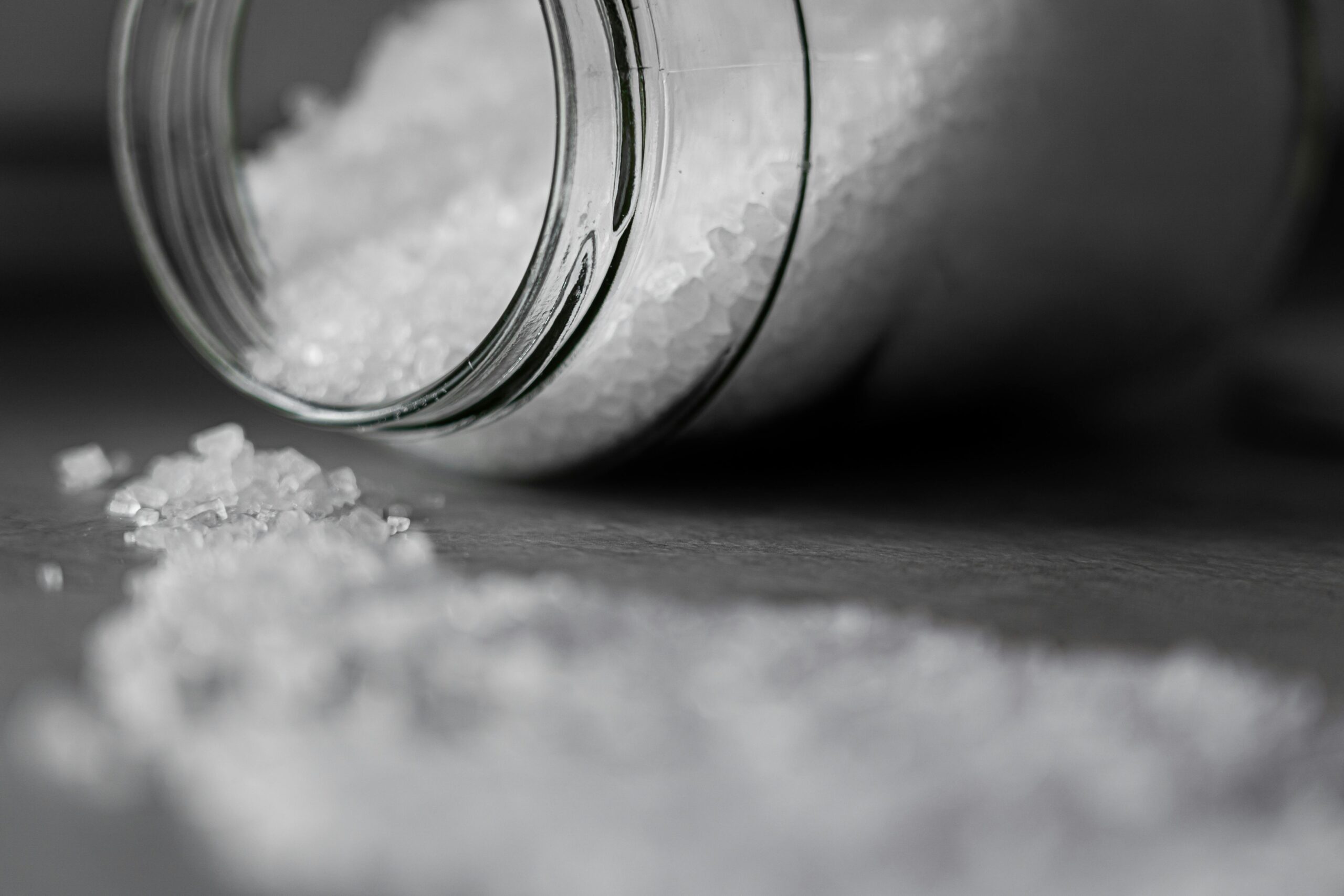Your cart is currently empty!

The Salty Truth: Unpacking the Impact of Sodium on Human Health
Salt & Human Health
Sodium, an essential mineral for human life, plays a crucial role in maintaining fluid balance, nerve and muscle function. However, the modern diet often contains excessive amounts of sodium, primarily in the form of salt, leading to a range of adverse health consequences. This article delves into the current understanding of sodium’s impact on human health, drawing upon peer-reviewed scholarly sources to provide a comprehensive overview.
The Double-Edged Sword: Sodium’s Role in the Body
Sodium is vital for several bodily functions. It helps regulate blood volume, which in turn affects blood pressure [1]. It also plays a key role in nerve impulse transmission and muscle contraction [2]. However, the body requires only a small amount of sodium to perform these functions effectively. The World Health Organization (WHO) recommends a daily sodium intake of less than 2 grams, equivalent to 5 grams of salt [3]. Unfortunately, most people consume far more than this recommended amount.
The Hypertension Connection: Sodium and Blood Pressure
The most well-established health risk associated with excessive sodium intake is hypertension, or high blood pressure [4]. Sodium attracts water, and when consumed in excess, it draws water into the bloodstream, increasing blood volume [5]. This increased volume puts extra pressure on the artery walls, leading to hypertension. Over time, hypertension can damage blood vessels and increase the risk of serious cardiovascular events.
Cardiovascular Consequences: Heart Disease and Stroke
Hypertension is a major risk factor for cardiovascular diseases, including heart disease and stroke [6]. High blood pressure can strain the heart, making it work harder to pump blood [7]. This can lead to heart failure, a condition where the heart is unable to pump enough blood to meet the body’s needs. Furthermore, hypertension can damage the walls of blood vessels, making them more prone to plaque buildup and blockages, which can lead to heart attacks and strokes [8].

Beyond Blood Pressure: Other Health Risks
While hypertension is the primary concern, excessive sodium intake has also been linked to other health problems. Studies suggest a possible association between high sodium intake and an increased risk of certain cancers, particularly stomach cancer [9]. Additionally, high sodium intake can contribute to the development of kidney stones and osteoporosis [10, 11].
The Modern Diet: A Salty Culprit
The high sodium content of the modern diet is a major contributor to the global burden of sodium-related health problems. Processed foods, such as ready meals, snacks, and fast food, are often loaded with sodium [12]. Even seemingly healthy foods like bread and cereals can contain significant amounts of sodium [13]. Restaurant meals also tend to be high in sodium, as chefs often use salt to enhance flavor [14].
Public Health Initiatives: Reducing Sodium Intake
Recognizing the significant health risks associated with excessive sodium intake, many countries and organizations have implemented public health initiatives to promote sodium reduction. These initiatives often involve educating the public about the dangers of high sodium intake and encouraging them to make healthier food choices [15]. Some countries have also implemented regulations to reduce the amount of sodium in processed foods [16].
Conclusion: A Call for Dietary Awareness
The evidence is clear: excessive sodium intake poses a significant threat to human health, primarily through its impact on blood pressure and cardiovascular health. While sodium is essential for life, the modern diet often contains far more than the body needs. By raising awareness about the dangers of high sodium intake and encouraging individuals to make informed food choices, we can work towards reducing the global burden of sodium-related diseases.
References:
- Whelton, P. K., et al. (2018). “2017 ACC/AHA/AAPA/ABC/ACPM/AGS/APhA/ASH/ASPC/NMA/PCNA Guideline for the Prevention, Detection, Evaluation, and Management of High Blood Pressure in Adults:1 A Report of the American College of Cardiology/American Heart Association Task Force on Clinical Practice Guidelines.”2 Journal of the American College of Cardiology, 71(19), e127-e248.3
- Marieb, E. N., & Hoehn, K. (2013). Human anatomy & physiology. Pearson Education.
- World Health Organization. (2012). Guideline: Sodium intake for adults and children. WHO.
- Aburto, N. J., et al. (2013). “Effect of lower sodium intake on health: systematic review and meta-analyses.” BMJ, 346, f1326.4
- National Institutes of Health. (2021). Sodium in your diet. NIH.
- Centers for Disease Control and Prevention. (2021). High blood pressure. CDC.
- American Heart Association. (2021). Why high blood pressure is a silent killer. AHA.
- Libby, P., et al. (2019). “Pathogenesis of atherosclerosis.” Nature Reviews Cardiology, 16(3), 164-175.
- D’Elia, L., et al. (2012). “Salt intake and gastric cancer: a systematic review and meta-analysis of case-control studies.” Gastric Cancer, 15(1), 1-8.
- Curhan, G. C., et al. (1997). “Dietary sodium and the risk of kidney stones in women.” Journal of the American Society of Nephrology, 8(4), 626-631.
- Devine, A., et al. (2005). “Sodium intake and the risk of osteoporosis in postmenopausal women.” Journal of Clinical Endocrinology & Metabolism, 90(7), 3870-3875.
- U.S. Food and Drug Administration. (2021). Sodium in your diet. FDA.
- Action on Salt. (2021). Salt content of everyday foods. Action on Salt.
- Neal, B., et al. (2018). “Global sodium consumption and its relationship to blood pressure: an individual-level data meta-analysis.” Journal of Human Hypertension, 32(1), 5-15.
- World Health Organization. (2016). Global strategy on diet, physical activity and health. WHO.
- Webster, J. L., et al. (2014). “Salt reduction initiatives around the world.” Cardiovascular Diseases and Diabetes, 3(1), 8.